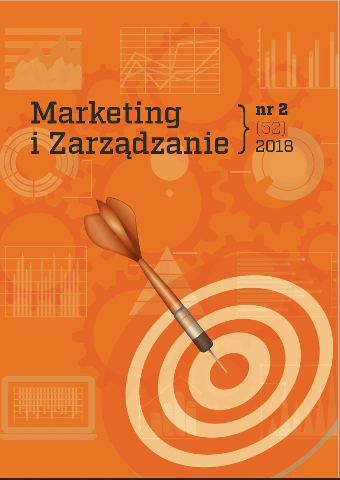
ISSN: 2450-775X
eISSN: 2543-5574
OAI
DOI: 10.18276/miz.2018.54-08


Issue archive /
nr 4 (54) 2018
Tourist Space and its Role in the Activities of Tourism Enterprises
| Authors: |
Marzena
Wanagos
Gdynia Maritime University, Faculty of Entrepreneurship and Quality Science Lidiya Gumenyuk Immanuel Kant Baltic Federal University, Kaliningrad, Russia |
| Keywords: | tourism space tourist enterprise business environment |
| Data publikacji całości: | 2018 |
| Page range: | 11 (103-113) |
| Klasyfikacja JEL: | M30 R11 Z32 |
Abstract
The tourist space is very diverse. It is shaped by both natural and anthropogenic factors. For many entities, it is of key importance in operations. Tourism is a spatial phenomenon ‒ its essence is based on moving people in space and using assets and infrastructure. It requires a special reference to individual elements of space. Tourism enterprises base their activities on spatial conditions, but also affect the changes taking place in the environment themselves. The aim of this study is to show the key role of spatial aspects in the operation of tourism enterprises. The work consists of two parts ‒ literature analysis of the problem and presenting the empirical study. In the second part, an attempt was made to present entrepreneurs' opinions on the role of space in their activities. The survey was carried out by means of a diagnostic survey among tourist service providers (owners of hotels, restaurants, travel agencies, carriers). The research was carried out in 2018 on a sample of a total of 34 respondents from the Pomorskie Voivodeship. The results show that space is a key element of the business conditions of the surveyed enterprises. The surveyed entrepreneurs undertake to a large extent activities favoring the geographical environment, being aware of its impact on the results of their activities.
Download file
Article file
Bibliography
| 1. | Alejziak, W. (2001). Współczesne koncepcje i wybrane modele polityki turystycznej. In: A.S. Kornak, A. Rapacz (eds.), Zarządzanie turystyką i jej podmiotami w miejscowości i regionie. Wrocław: Wydawnictwo Akademii Ekonomicznej. |
| 2. | Domański, R. (2006). Gospodarka przestrzenna. Podstawy teoretyczne. Warszawa: Wydawnictwo Naukowe PWN. |
| 3. | Jędrzejczyk, I. (1995). Ekologiczne uwarunkowania i funkcje turystyki. Katowice: Śląsk sp. z o. o. |
| 4. | Krzymowska-Kostrowicka, A. (1999). Geoekologia turystyki i wypoczynku. Warszawa: Wydawnictwo Naukowe PWN. |
| 5. | Kurek, W. (ed.). (2008). Turystyka. Warszawa: Wydawnictwo Naukowe PWN. |
| 6. | Liszewski, S. (1995). Przestrzeń turystyczna. Turyzm, 5 (2), 87‒103. |
| 7. | Liszewski, S. (2006). Przestrzenie turystyki i ich transformacja we współczesnym świecie. Turyzm, 16 (2), 7‒20. |
| 8. | Liszewski, S., Baczwarow, M. (1998). Istota i właściwości przestrzeni rekreacyjno-turystycznej. Turyzm, 8 (1), 39‒67. |
| 9. | Małachowski, K. (2015). Dylematy konkurencyjności regionalnej ‒ zarys problemu. Zeszyty Naukowe Uniwersytetu Szczecińskiego, 881, Ekonomiczne Problemy Usług, 118, 225‒235. |
| 10. | Marciszewska, B. (2017). Innowacyjność organizacyjna w turystyce. In: E. Biernat, E. Dziedzic (eds.), Trendy w turystyce. Warszawa: Oficyna Wydawnicza SGH. |
| 11. | Meyer, B. (2004). Turystyka jako ekonomiczny czynnik kształtowania przestrzeni. Rozprawy i Studia/Uniwersytet Szczeciński, 545 (DCXIX). |
| 12. | Miossec, J.M., (1976). Elements pour une teorie de l’espace touristique. Aix-en-Provence: Centre des Hautes Etudes Touristiques, ser. C, 36. |
| 13. | Oppermann, M. (1993). Tourism Space in Developing Countries. Annals of Tourism Research, 20 (3), 535‒556. |
| 14. | Pender, L., Sharpley, R. (eds.) (2008). Zarządzanie turystyką. Warszawa: PWE. |
| 15. | Rapacz, A. (ed.). (1998). Przedsiębiorstwo turystyczne na rynku. Wrocław: Wydawnictwo Akademii Ekonomicznej. |
| 16. | Smalec, A. (2011). Rola komunikacji w rozwoju koncepcji partnerstwa w regionach. Zeszyty Naukowe Uniwersytetu Szczecińskiego, 663, Ekonomiczne Problemy Usług, 75, 489‒502. |
| 17. | Stachowski, J. (1993). O pojmowaniu przestrzeni w geografii turyzmu. Acta Universitatis Nicolai Copernici. Geografia, XXIV, Nauki Matematyczno-Przyrodnicze, 82, 171‒180. |
| 18. | Szostak, D. (2008). Możliwości oceny jakości obszarowego produktu turystycznego. In: A. Panasiuk (ed.), Gospodarka turystyczna. Warszawa: Wydawnictwo Naukowe PWN. |
| 19. | Wanagos, M., Studzieniecki, T. (2018). The development of the tourist product of the city and the information needs of tourism entities. 32nd International Scientific Conference on Economic and Social Development – Odessa, 21‒22 June 2018. |
| 20. | Włodarczyk, B. (2007). Przestrzeń turystyczna. Pojęcie, wymiary, cechy. Turyzm, 17 (1‒2), 145‒158. |
| 21. | Włodarczyk, B. (2009). Przestrzeń turystyczna. Łódź: Wydawnictwo Uniwersytetu Łódzkiego. |
| 22. | Włodarczyk, B. (2011). Przestrzeń turystyczna – kilka słów o istocie pojęcia. In: M. Durydiwka, K. Duda-Gromada (eds.), Przestrzeń turystyczna. Czynniki, różnorodność, zmiany (pp. 15‒28). Warszawa: Wydawnictwo Uniwersytetu Warszawskiego. |